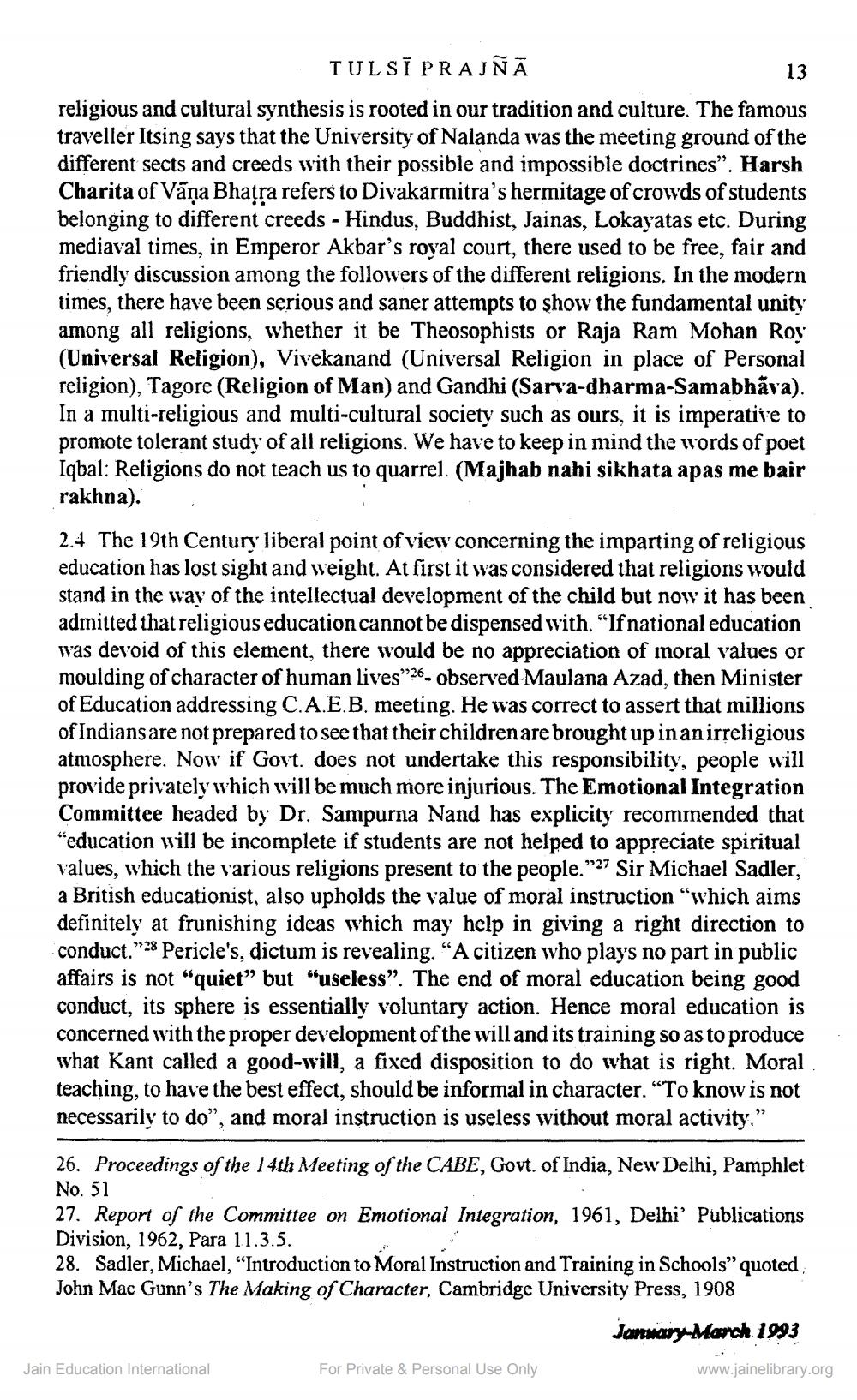________________
TULSI PRAJÑA
13 religious and cultural synthesis is rooted in our tradition and culture. The famous traveller Itsing says that the University of Nalanda was the meeting ground of the different sects and creeds with their possible and impossible doctrines". Harsh Charita of Vāņa Bhatra refers to Divakarmitra's hermitage of crowds of students belonging to different creeds - Hindus, Buddhist, Jainas, Lokayatas etc. During mediaval times, in Emperor Akbar's royal court, there used to be free, fair and friendly discussion among the followers of the different religions. In the modern times, there have been serious and saner attempts to show the fundamental unity among all religions, whether it be Theosophists or Raja Ram Mohan Roy (Universal Religion), Vivekanand (Universal Religion in place of Personal religion), Tagore (Religion of Man) and Gandhi (Sarva-dharma-Samabhāva). In a multi-religious and multi-cultural society such as ours, it is imperative to promote tolerant study of all religions. We have to keep in mind the words of poet Iqbal: Religions do not teach us to quarrel. (Majhab nahi sikhata apas me bair rakhna).
2.4 The 19th Century liberal point of view concerning the imparting of religious education has lost sight and weight. At first it was considered that religions would stand in the way of the intellectual development of the child but now it has been admitted that religious education cannot be dispensed with. “If national education was devoid of this element, there would be no appreciation of moral values or moulding of character of human lives"26- observed Maulana Azad, then Minister of Education addressing C.A.E.B. meeting. He was correct to assert that millions of Indians are not prepared to see that their children are brought up inanirreligious atmosphere. Now if Govt. does not undertake this responsibility, people will provide privately which will be much more injurious. The Emotional Integration Committee headed by Dr. Sampurna Nand has explicity recommended that "education will be incomplete if students are not helped to appreciate spiritual values, which the various religions present to the people.”27 Sir Michael Sadler, a British educationist, also upholds the value of moral instruction "which aims definitely at frunishing ideas which may help in giving a right direction to conduct."28 Pericle's, dictum is revealing. “A citizen who plays no part in public affairs is not "quiet” but “useless”. The end of moral education being good conduct, its sphere is essentially voluntary action. Hence moral education is concerned with the proper development of the will and its training so as to produce what Kant called a good-will, a fixed disposition to do what is right. Moral teaching, to have the best effect, should be informal in character. “To know is not necessarily to do", and moral instruction is useless without moral activity"
26. Proceedings of the 14th Meeting of the CABE, Govt. of India, New Delhi, Pamphlet No. 51 27. Report of the Committee on Emotional Integration, 1961, Delhi' Publications Division, 1962, Para 11.3.5. 28. Sadler, Michael, “Introduction to Moral Instruction and Training in Schools” quoted, John Mac Gunn's The Making of Character, Cambridge University Press, 1908
January March 1993
Jain Education International
For Private & Personal Use Only
www.jainelibrary.org




